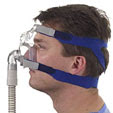BALTIMORE - While reports of problems associated with Round 1 of competitive bidding are trickling in, one group has remained quiet: beneficiaries. "We are not hearing anywhere near enough (from beneficiaries)," said Wayne Stanfield, executive director of NAIMES. "There are obviously problems, but not enough that would make Congress take notice." Reported problems so far range from delayed hospital discharges to trouble finding the right equipment or provider, but most of these problems are being reported by providers themselves. Too bad lawmakers are probably tired of hearing from HME providers, say industry stakeholders. "I think the biggest impact has to come from the end user," said Rose Schafhauser, executive director of the Midwest Association for Medical Equipment Services. "We really need them to kind of knock lawmakers over the head and say, 'This really is an issue.'" Industry stakeholders have set up toll-free complaint lines as well as websites, www.biddingfeedback.com and www.competitivebiddingconcerns.com, to make it easy to report problems. AAHomecare has received a few dozen complaints from patients and caregivers. "It's probably just the tip of the iceberg," said Michael Reinemer, vice president of communications and policy for the association. "Real problems won't necessarily emerge in the first couple of weeks." Another issue: Providers are bending over backward to make the program work, giving beneficiaries fewer reasons to complain. "We are hearing that there are many suppliers simply taking patients, whether they are getting paid or not," said Stanfield. "In many cases where a contract supplier won in one or two categories, they may take them in other categories as well." Still, it's only been a month since the program officially kicked off, and as it continues to roll along, it is likely that increasing numbers of issues will crop up. For now, it's important for providers to continue to get the word out. "We've been strategizing about how we can get the message out there," said Schafhauser. "We've got flyers that members hand out to referral sources and beneficiaries, and we are concentrating on making sure they get information out there that the calls aren't coming in yet." |
Things You'll Need:
- A Standard Walker
- Special Safety Accessories
- Determination to find what works the best for you!!
- 1
Identify ways to make holding on to your walker more comfortable. Standard walker grips are smooth, hard, and unfriendly to the human hand. Not to mention, slippery when one's hand is wet. And don't you just love the feeling of cold steel on your hand in the dead of winter? Walker hand grips come in terrycloth or fleece, slip on in a snap, and help you to "keep your grip."
- 2
Find walker accessories to help you carry the items you need with no adverse impact on safety. Manufacturers have been responsive to seniors in recent years by providing a wide range of carrying accessories for walkers. The classic "big front bag" for walkers has been improved upon, and other bags, boxes, and cases have been added for more specialized purposes.
- 3
Look for ways to help your walker glide more easily across the floor, thereby avoiding accidents. Deal with uncooperative surfaces with neat walker accessories that help you glide along. While they won't help you slalom down the slopes, walker skis pop easily onto the walker legs and help you slide, rather than snag, on carpeting. Skiing not your sport? How about tennis? Ball glides ingeniously use tennis balls to help the walker slide along over smooth surfaces like wood, tile, and vinyl flooring---and never leave a mark.













